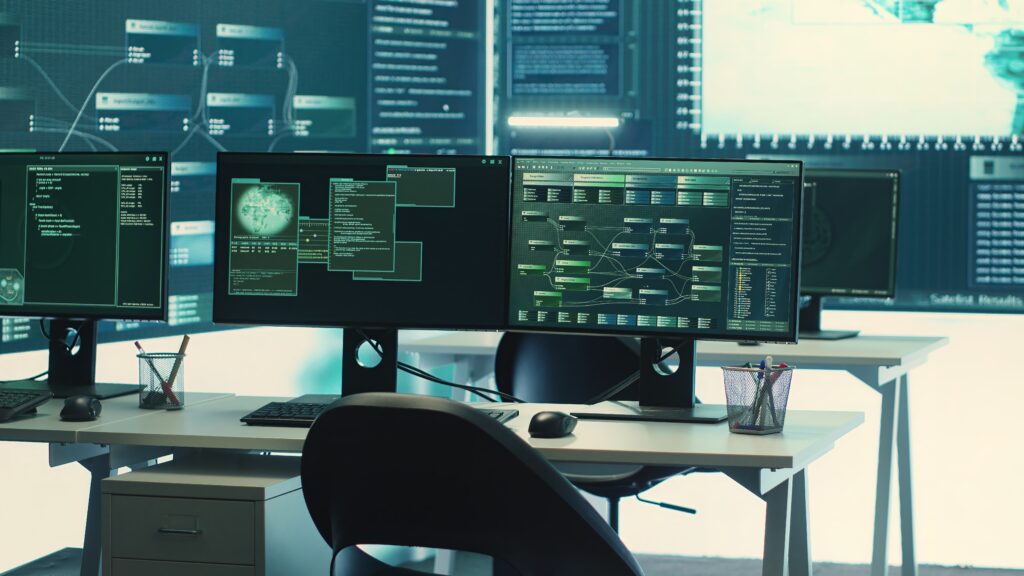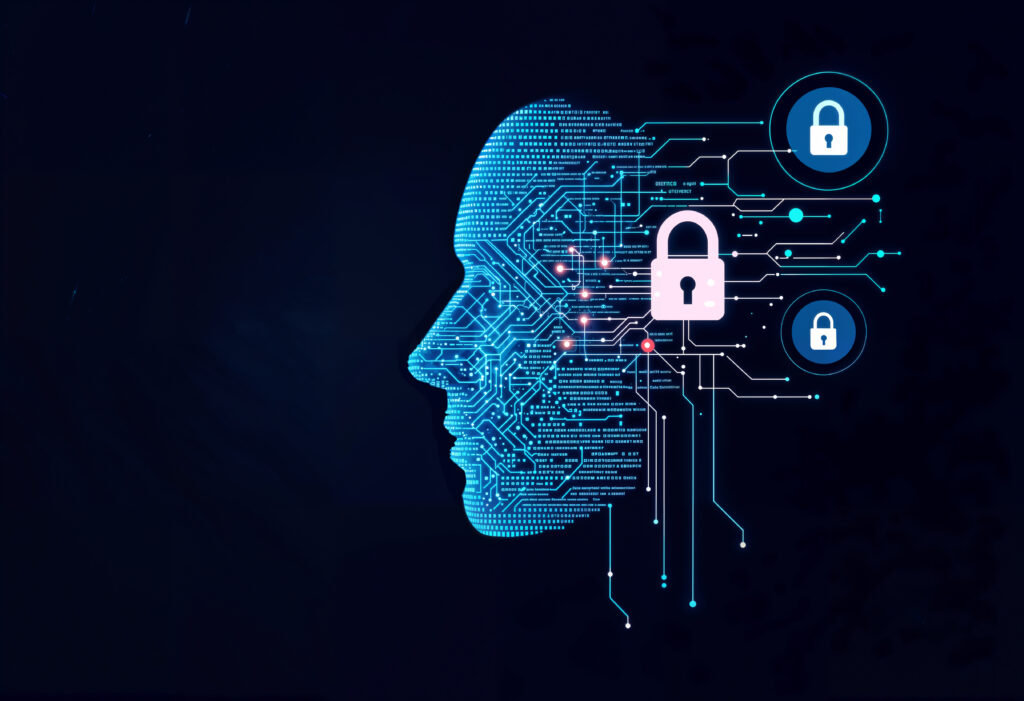🔐 What Is Cybersecurity
Cybersecurity is the exercise of protecting networks, devices, applications, and data against unauthorized access, misuse, or destruction while maintaining three major principles: confidentiality, integrity, and availability. Cybersecurity integrates technologies, processes, and human behavior to protect against cyber threats .
🌍 Why Cybersecurity Matters
Cybersecurity is important because:
- Protects privacy & data: Secures personal and sensitive data (e.g., banking, health, identity).
- Prevents reputational and financial damage: Prevents data breaches, ransomware, and system downtime resulting in financial loss and brand reputation hit .
- Protects critical infrastructure: Preserves the integrity of critical systems such as power, transportation, and healthcare .
- Evens business continuity and regulatory compliance: Prevents organizations from paying for downtime and complying with regulations .
⚠️ Common Cyber Threats
Some of the most common and harmful threats are:
- Malware (viruses, ransomware, spyware, trojans)
- Phishing and social engineering
- Denial‑of‑Service (DoS/DDoS) attacks
- Man-in-the‑Middle attacks
- Insider threats (malicious or accidental internal actors)

🛡 Layers & Best Practices
Effective cybersecurity utilizes multiple layers of defense:
- Network Security: Firewalls, intrusion detection systems (IDS), VPNs
- Endpoint Security: Antivirus, endpoint detection and response (EDR)
- Application Security: Secure coding, vulnerability scanning
- Data Security: Encryption, access controls, data loss prevention
- Identity & Access Management (IAM): Strong passwords, multi-factor authentication
- Cloud Security: Secure cloud environments and services
- Incident Response & Recovery: Plans to detect, respond, and bounce back
- Human Element: Training, awareness, protocols
🧠 Frameworks & Standards
Pre-established frameworks help organizations structure their cybersecurity efforts:
- NIST Cybersecurity Framework: Guides identify, protect, detect, respond, and recover operations
- Zero-trust architecture and security best practices such as multi-factor authentication
🧭 Big-Picture Perspective
Cybersecurity isn’t about technology—it’s a strategic necessity in an increasingly digitally dependent world. Cyberattacks can threaten everything from individual identity to national critical infrastructure. Effective cybersecurity combines technology, process, and people to establish defensible foundations that are able to keep pace with ever-changing threats.
🔍 New Threats & AI’s Double-Edged Sword
- AI-Powered Attacks: Cybercriminals are increasingly leveraging AI—including tampered LLMs like “WormGPT” and “DarkGPT”—to autonomously craft malware, phishing campaigns, and exploits, acting as a force-multiplier for attackers .
- Auto Hacking & Vulnerability Discovery: Sophisticated models have been shown to identify previously unknown zero-day vulnerabilities in large open-source projects, highlighting how AI can rapidly escalate threats .

🛡 Cutting-Edge Defenses & Architectural Shifts
- Zero-Trust Architecture (ZTA): The “never trust, always verify” approach is picking up speed, integrating continuous authentication, least-privilege access, and micro-segmentation throughout remote, cloud, and hybrid environments.
- Adaptive AI Defenses: Next-generation systems such as retrainable firewalls in real time dynamically adjust to threat behavior in real-world networks—a preemptive shift in network security.
🌐 Broader Risk Landscape
- Quantum Threats: As quantum computing becomes a reality, traditional encryption (RSA, ECC) is at risk of being deprecated. Organizations need to implement quantum-resistant encryption and ensure crypto agility .
- Remote Work & Cloud Security: The marriage of remote work and cloud infrastructure is breaking the perimeter-based security model, again affirming the need for models such as SASE and ZTA.
⛓ Supply Chain & IoT Vulnerabilities
- Supply Chain Attacks: There has been a rise in attacks—45% of organizations are expected to experience such a breach by 2025, according to Gartner. Mitigation measures entail stringent vendor screening, SBOM adoption, and segregation .
- IoT and 5G Vulnerabilities: IoT growth and 5G uptake introduce new security threats—network slicing, insecure authentication, and poor update functionality. Defense measures encompass network segregation and device hardening .
💼 Threat Modeling & Risk Management
- Continuous Threat Exposure Management (CTEM): Preemptive strategy focusing on vulnerability detection, frequent simulations, and risk segmentation. CTEM adoption may reduce successful attacks by 50% by 2026, Gartner predicts.
- Managed Detection & Response (MDR): Externalizing continuous monitoring and incident response mitigates talent gaps and provides specialist monitoring.

🔄 Regulatory & Geopolitical Forces
- Escalating Cyberattacks:
- More than 27% of UK companies encountered cyberattacks in the last year, with 73% expecting future disruptions. The main vulnerabilities are IoT, unsupported Windows, and smart building tech .
- Global Tensions:
- State-sponsored cyber activity—such as Iranian-aligned campaigns in response to U.S. strikes—complicates national defense policies .
- Regulatory Landscape:
- EU’s Cyber Resilience Act and DORA require lifecycle-oriented security for digital products and financial institutions.
- The UK Cyber Security and Resilience Bill extends incident-reporting requirements and requires passwordless authentication as a requirement
🧠 Strategic Insights
- The Double-Edged Sword of AI: Shield and Sword
The Double-Edged Sword of Artificial Intelligence. Defenders leverage it to automate threat hunting, enhance detection, and launch real-time responses—imagine autonomous agents in Security Operation Centers (SOCs). Adversaries, however, leverage AI to design smarter attacks, such as adaptive malware, deepfake phishing, and ultra-targeted campaigns. - Emerging Architecture & Crypto Trends
Zero Trust Architecture (ZTA) is no longer a choice—it’s mandatory. In conjunction with this, adaptive security models—and quantum-resistant cryptography preparation—are quickly becoming the keystone of sound cyber defense strategies. - Secure Supply Chains & IoT Infrastructure
With more organizations depending on third-party vendors and IoT devices, securing supply chains has taken center stage. If you don’t get vendor risk and IoT security under control, attackers will target these vulnerable links. - Move from Reactive to Proactive
Rather than reacting to breaches, best-of-class companies today employ methods such as Continuous Threat Exposure Management (CTEM) and Managed Detection & Response (MDR). These assist in predicting threats, highlighting vulnerabilities before they are exploited, and balancing cybersecurity personnel deficits. - Compliance Is Non-Negotiable
Cyber regulations are no longer a choice—they’re at the heart of risk management. Local regulations and international standards require you to integrate compliance into your cybersecurity practices. Forgetting that connection risks fines, reputational loss, and serious legal consequences.



